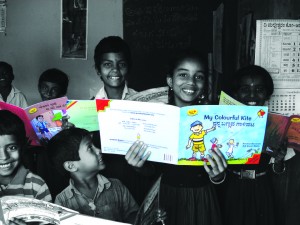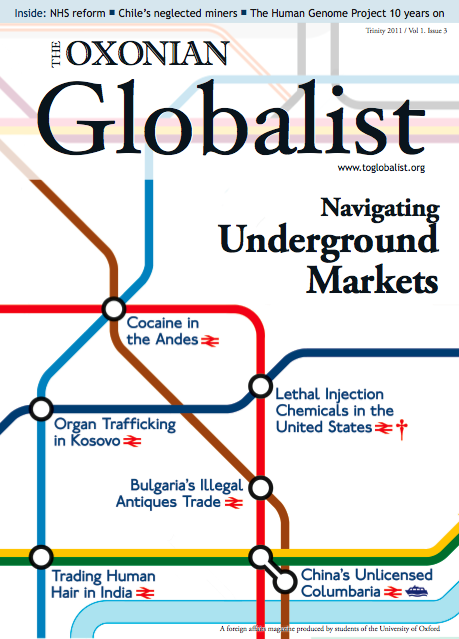
ASER’s book publishing project provided the skill set needed to create a nationwide survey. Photo by Pratham Books.
IN India, the number of school-aged children enrolled in school is almost beyond improvement, with 96.5% of those aged six to 14 enrolled in school in 2010. However, that figure does not signify success for Indian education. In the same year, only 53.4% children 13 years old could read a text designed for seven year olds.
This figure comes from the ASER Survey, established in 2005 by Pratham India – the country’s largest educational charity. ASER manages to produce a highly accurate report each year, freely available to all, for just $1000 per state. Training and capacity building at every stage ensure that the survey adheres to strict statistical randomisation standards, and that each child is tested in the same way. The metrics produced are used by government and charities, but most importantly, by Indian citizens, who can now find out exactly where their 3% cess is going.
Before ASER, no national figures existed for the crucial early stages of learning; the focus was on enrolment. But enrollment is no guarantee of attendance, let alone achievement. Those children who fall behind early will seldom catch up: in classes of 50, teachers simply cannot attend to the needs of individuals. Such children typically fall further behind or leave altogether to start work early. Lack of resources, especially teachers, poor attendance, language differences between teacher and pupils, and policies such as placing children in classes according to age, not ability, contribute to making this occurrence a common one. Inadequate schools are even implicated in bonded child labour, since some parents in the grip of poverty feel that an ‘apprenticeship’ (for that is how such arrangements are presented) in a factory would be a better option for their child than a space on the floor in the back of a dusty classroom.
ASER began from a private charity, Pratham India, which has been addressing such issues for sixteen years, reaching 34 million children with just one of its many programs. Pratham’s main focus is supporting and training teachers. The ‘Read India’ programme trains teachers and volunteers in new techniques based on participation: maths is taught with a wide range of activities and reading with the Indian version of phonics – ‘ka, kaa, ki, kee, ku, koo, kay, kai, ko, kow’ – with speedy and impressive results across India. Pratham attacks the problem from every angle: combating child labour, setting up nursery schools, raising awareness and equipping libraries.
When they found it difficult to interest children in the small collection of story-books available, they even began publishing their own range of colourful, affordable children’s books which are now used throughout India. However, India is notoriously multilingual, with each region speaking a unique language. This makes creating tools a challenge: stories must be created that are equally easy to read in more than thirty languages, and several alphabets. Tools must be designed so that every volunteer uses them in a similar way. Pratham invested in solving those problems, and in doing so, learned the set of skills that would enable it to grow across India. As it expanded, reliable metrics on learning for the whole country became essential, and its biggest project yet – ASER – was born.
ASER is a survey both for and by the people. More than 100,000 volunteers have taken part over five years, testing 700,000 Indian children each year. Recruited locally, volunteers receive training then travel to their states’ rural areas, testing children in their homes. As the children attempt to read simple paragraphs, parents and neighbours gather, with an average of 25% of parents discovering that their child cannot read or add despite two years of lessons. Parents who themselves tend to lack basic edu- cation are often distant from their child’s schooling, and assume that attendance at school is enough. Surveyors spend time explaining their work with parents, the village sarpanch and panchayat (local leader and committee), who are often motivated to seek extra tuition (surprisingly common: 24% of children had some tutoring in 2010) or improve their local schools. Such tutoring can come from the surveyors themselves, who are often keen to ameliorate the inadequacies they were surprised to discover. Volunteers trained by Pratham run ‘accelerated reading schemes’ in thousands of villages each year, training children to read in just one month.
ASER represents a local approach to education that may be the key to educating India’s vast population. An educated child is likely to be healthier, wealthier, and have fewer children. For India, it’s a worthwhile investment.
Kate Thompson is studying for a M.St in Greek and Latin languages and literatures at Christ Church.

